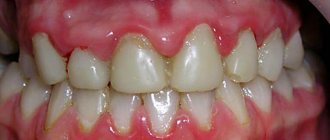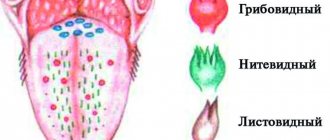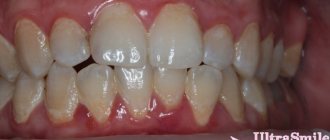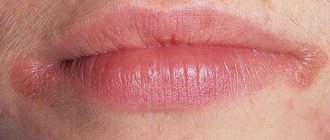What should a healthy tongue look like?
Dentists explain that a healthy tongue is pink in color and evenly covered on top with small seals called taste buds. The appearance of the tongue changes with certain diseases, sometimes very dangerous. If your tongue has become a different color, is swollen and painful, or has permanent plaques or ulcers, contact your dentist or physician to find out what is causing this.
Changing tongue color
A change in the color of the tongue and the appearance of streaks or bumps on it may be a sign of a dental or systemic disease. According to the MSD Manual, a white coating or whitish patches on the tongue can occur due to oral thrush, leukoplakia associated with alcohol or tobacco use, fever, dehydration, and skin conditions such as lichen planus. Another reason for the appearance of a white coating on the tongue is the habit of breathing through the mouth.
The tongue becomes smooth, red and sometimes swollen due to anemia and vitamin B3 deficiency. The tongue acquires a characteristic strawberry color during scarlet fever and in young children with such a serious illness as Kawasaki disease. If you suspect scarlet fever and Kawasaki syndrome, you should immediately seek medical help. In case of anemia, the tongue may not become red, but, on the contrary, pale.
Experts note that the tongue can also take on a “hairy” appearance and turn brown, greenish or even black. In most cases, this does not pose a threat to health: such a change in the color of the tongue is often associated with the accumulation of dead skin cells on the taste buds. According to the MSD Manual, a black tongue can also be caused by taking medications that contain bismuth.
Coated tongue
Light white
Such tongue indicates problems with the liver or gastrointestinal tract. Since it is impossible to establish an accurate diagnosis based on this symptom alone (it could be either low acidity or a stomach ulcer), it is better to consult a doctor.
Thick layer of white plaque
If your tongue is covered with a thick layer of white coating, this is not a good sign that some systems in the body cannot fully perform their physiological functions in maintaining health. It may also indicate the presence of a viral infection.
Yellow
This type of plaque indicates liver or gallbladder disease. It can also be a sign of stagnation of food in the body and poor digestion.
Unevenly colored, grooved tongue
“Geographical” tongue is a sure sign of gastrointestinal diseases. If the grooves are so deep that they look like cracks, this indicates increased blood sugar. A doctor will help you establish an accurate diagnosis.
How to keep your tongue healthy
The tongue, like teeth, is visible to others, and if it looks unhealthy, you may feel self-conscious. If your dentist or therapist has already determined that the discoloration of your tongue is not due to disease, you can improve its appearance by gently brushing your tongue twice daily during your normal oral hygiene routine. Use a toothbrush with a special scraper or pad to clean your tongue and cheeks.
Also, get into the habit of sticking out your tongue and examining it after brushing your teeth, this will allow you to immediately notice changes in its color or detect other problems. However, you need to understand that a healthy tongue color does not guarantee good dental health. Remember to visit your dentist regularly to check the health of your teeth, gums, and overall mouth.
Structure and functions
The tongue is a muscular organ without bones, covered with a mucous membrane.
Main functions:
- is directly involved in the pronunciation of sounds;
- determines the taste of what a person eats and drinks;
- is an integral element of the digestive system - it carries out the primary processing of food before it enters the esophagus.
The structure of the organ is quite simple, but very interesting. The tongue is divided into two parts: the back - the root and the front - the body or, as it is also called, the back, which has a velvety structure. The top is covered with papillae, which are responsible for taste buds.
Is it worth diagnosing by tongue?
Doctors have been studying the question of what diseases can be identified by language for several hundred years. The results of research by ancient and modern scientists show that this connection exists, but it must be properly understood and assessed. If a healthy person has irregularities or the color of the plaque has changed, this phenomenon may be the very first symptom of a disease that will manifest itself in the future with other abnormalities.
There is an assumption that the imprints of the disease appear on this organ several days before its clinical signs, but you should not use diagnosis by a person’s tongue for further self-medication. This is a whole science, and only a good specialist can understand it. Treatment can begin only after a full examination and establishment of a correct diagnosis.
Stages of tongue cancer
There are several stages of the disease, each of which has its own distinctive features.
Initial stage of tongue cancer (first)
Photo: this is what the initial stage of tongue cancer looks like
It is characterized by an asymptomatic course - practically nothing bothers patients. It appears as whitish spots on the mucous membrane, the so-called papillary growths. They are often mistaken for plaque, which is located on the lateral surface of the muscular organ.
When examined, doctors often mistake these formations for manifestations of other diseases: glossitis or stomatitis. There is no pain at this stage.
Stage of clinical manifestations (second)
As the disease progresses, the “plaque” gradually turns into a lump on the tongue, which, if left untreated, transforms into a tumor on the tongue. At this stage, a pain syndrome appears; the pain is diffuse or local in nature, very often radiating to nearby organs (neck, temple, ears).
Patients at this stage often complain of bad breath, which is caused by infection and suppuration of the tumor. The clinical picture is accompanied by difficulty swallowing, articulation disorder, swelling and numbness of part of the tongue. Metastasis to surrounding tissues and nearby lymph nodes - submandibular, cervical - is possible.
Advanced degree (third)
It is possible to bring the disease to this stage if you completely ignore the symptoms of the initial and second stages of tongue cancer. It manifests itself as aggressive invasive (penetrating into the thickness of the organ and surrounding tissues) growth, accompanied by tissue decay.
Terminal stage (fourth)
In this phase, distant metastases occur - in the bones, liver, lungs. Treatment of advanced tongue cancer is not very successful and the prognosis is very doubtful. Patients who progress the disease to the terminal stage rarely live more than a year.
Treatment is only palliative - the fight against pain and cancer intoxication.
All the colors of the rainbow in your mouth
Everyone knows that by the color of the tongue one can easily determine that something is wrong with the body, since some diseases are “reflected” on it by the characteristic color of the plaque. The most common of them:
- measles or flu, high fever - burgundy coating;
- lack of nutrition, anemia, heart failure - pale tongue;
- diseases of the blood or respiratory tract - purple plaque;
- problems with the gastrointestinal tract, smoking, jaundice - yellow or gray plaque;
- diseases of the liver, spleen, dysentery, abscesses, advanced viral diseases - black plaque;
- kidney disease - blue plaque;
- blood circulation disorders, heavy metal poisoning, scurvy - blue plaque;
- dehydration, fungal infection - white tongue;
- diseases of the oral cavity - dark brown plaque.
That is why it is important to pay attention to details, as they can tell more about health than the person himself.
Diagnostic signs
If vital processes are balanced, the body functions without failures, the human tongue has a healthy appearance. This is manifested in its smooth, velvety surface, uniform pink color and transparent coating of saliva. There should be no discomfort, burning, tingling or lack of sensitivity in any areas.
Photo: tongue of a healthy person
In the human body, pathologies are determined by the following characteristics:
- Color and its uniformity on the surface of the tongue.
- Smell, color and consistency of plaque.
- Relief.
- The shape of the organ and the lines in the middle.
- Movements.
- Sensation of taste.
Diagnosis of health using the tongue should be carried out as follows: stick it out as much as possible, look in the mirror and analyze all the indicated characteristics. The sensations of taste and touch, as well as the accumulation of plaque, should be monitored throughout the day. All features that were identified should be compared with text descriptions.
If the patient tells the doctor about changes in health status and language diagnostic results, he is prescribed an examination to clarify the diagnosis.
Correspondence of tongue zones to internal organs
Ancient Chinese doctors determined that each section of this muscular organ is associated with a specific element. Modern medicine has established how the areas of the human tongue are associated with diseases of the internal organs. The correspondence is shown in the table:
| Zone | Element | Organs |
| Tip of the tongue | Fire | Small intestine, heart muscle |
| Transverse stripe between tip and central area | Metal | Colon, immunity, respiratory system |
| Middle | Earth | Stomach, spleen, pancreas |
| Sides | Tree | Gallbladder, liver |
| Rear end | Water | Organs in the lower abdomen, reproductive and urinary systems |
| Fold dividing the tongue into left and right parts | — | Spine |
For a more informative diagnosis, it is necessary to take into account both the general condition of the tongue and the condition of its individual sections. It is important to understand that the doctor draws conclusions not only from indirect external changes, but also from the results of laboratory and instrumental studies, and when making a diagnosis, one should rely more on conclusions confirmed by analyzes.
Diagnosis by color: what does the color of the tongue mean?
The color of this organ partly depends on the shade of its own tissues, and partly on the plaque accumulated on it. By studying the color of the tongue, you can determine what this sign indicates and go to a therapist to check your assumptions. Below is a comparison of the color of tongue coating and diseases that may be associated with it:
- A coated yellowish tongue is a symptom of improper functioning of the liver, gastrointestinal tract and a sign of people who smoke.
- Bright red plaque indicates the presence of hematological and cardiovascular pathologies.
- A reddish coating is a sign of inflammation of infectious or non-infectious origin.
- A dark red coating is a manifestation of intoxication.
- A red tip of the tongue is a symptom of pelvic organ diseases.
- Burgundy plaque – the presence of acute infections.
- Crimson – a manifestation of a severe infection with severe fever.
- A blue or purple tongue is a symptom of lung or heart disease.
- Blue plaque is a sign of kidney disease.
- Gray – the presence of chronic gastrointestinal diseases.
- Black plaque is a sign of infection with a chromogenic fungus or a state of acidosis.
- Pallor is a symptom of fungal infection, acute respiratory viral infection, anemia, tissue dehydration, and exhaustion of the body.
- A pale underside of a person’s tongue is a sign of liver disease and the associated gallbladder.
- A dirty gray coating is a consequence of the vital activity of parasites.
Presence of stains
In some diseases, the color of the tongue is uneven; distinct or unclear spots and stripes may be observed:
- The presence of red and white spots indicates the presence of scarlet fever.
- White spots on the edges or over the entire surface indicate the development of thrush.
Thrush on the tongueWhite scaly spots on the tongue indicate the presence of lichen planus.
- White spots on the lower part of the tongue are observed with vascular diseases of the brain or with oxygen starvation.
- The presence of one round white spot indicates a shift in the acid-base balance of gastric juice.
- A red spot on the tip of the tongue or along the edges is an injury caused by rough food or biting with teeth.
- Red dots on the top indicate mononucleosis or problems with hematopoiesis.
- Reddened areas with horny scales are a likely sign of a tumor.
- A red spot surrounded by yellowish blisters is a symptom of erythema.
- Reddened areas on a dry tongue are a sign of brain disease.
- Red blisters around the edges are a symptom of herpes.
- Yellow spots are a sign of inflammatory processes, diseases of the hematopoietic organs, oncology, necrosis, and a consequence of smoking.
- Purple areas indicate blood stagnation.
- Brown spots are a sign of a circulatory system disease or bleeding in the mouth.
- Blue spots are a sign of hemangioma, intoxication or blood diseases.
- Blackening of individual areas is a sign of chemical burns, a consequence of smoking, long-term use of antibiotics, stomatitis or gastrointestinal disorders.
Diagnostics by form
The definition of a human disease by language is also based on an analysis of its outline and shape of the midline:
| Tongue shape | Definition of disease by language |
| Thin | Metabolic failures |
| Thick | Dysfunction of the gastrointestinal tract and liver |
| Long | Heart problems |
| Convex | Pulmonary pathologies |
| Hydropic | Disturbed digestive processes |
| Midline curvature | Spine pathologies |
| One side of the tongue is adjacent to the cheek | Pathologies of cerebral circulation, strokes |
| The tongue has changed shape and relief | Hypo- or vitamin deficiency |
It is difficult for a person without medical education to determine from photographs or descriptions which organ shape is normal for him. Thus, a thick tongue can be mistaken for swelling. Therefore, you should not draw conclusions about your health status and treatment on your own ; it is better to consult a doctor and tell him about your assumptions.
Nature of the relief
Normal taste buds form a smooth, velvety surface. By the relief of the tongue you can determine the disease in an adult or child, how to do this:
Photo: symptom of “varnished tongue”Excessive roughness indicates dehydration, problems with the salivary glands, overdose of antibiotics, atropine drugs or fat-soluble vitamins.
- Increased roughness on a person’s dry tongue, sometimes with tooth marks, can indicate a gastrointestinal disease, such as appendicitis, intestinal infections, and ulcerative pathologies. If cracks and uneven edges are added to the dryness, this is a possible sign of diabetes.
"Cardinal's language"The “varnished tongue” symptom, in which the surface becomes excessively smooth due to atrophy of the taste buds, is observed with colitis, stomach cancer or problems with the absorption of vitamin B
- Diagnosis by the color of the tongue and its relief is clear in case of pellagra - hypovitaminosis of nicotinic acid and vitamin B. The tongue looks ribbed due to cracks and is covered with a brown coating that is difficult to remove. The scarlet "cardinal tongue" shown in the image to the right then forms. At a later stage, a “varnished tongue” appears.
Photo: “geographical language”Alternating normal and inflamed papillae form a “geographic tongue” - a peculiar pattern with grooves that is more common in children with allergies or mental disorders. The projection of spots onto internal organs will help diagnose which organ suffers from food allergies, vitamin deficiency, and atopic dermatitis.
Movement and sensitivity
Normally, a person moves his tongue without difficulty, without trembling or muscle pain . If there are diseases of the nervous system and neurasthenic syndromes, characteristic trembling appears, and with strokes, patients find it difficult to chew and talk. With hemorrhages in the brain, both the sensitivity of taste buds and the sense of touch on surfaces are partially or completely absent.
The causes of trembling can be not only neurological, but also endocrine. The progression of brain diseases in later stages leads to a decrease in muscle size.
If uncharacteristic sensations or burning occur, you should contact a neurologist. If only the surface of the organ hurts, it is covered with plaque, turns pale, you need to show it to the dentist, this may be a sign of inflammation of the mucous membrane - stomatitis.
The function of taste buds is also used in diagnosing diseases by the tongue; it can change with burns, smoking or hormonal imbalances and is often accompanied by the accumulation of plaque.
In pregnant women, a change in taste preferences and aversion to normal food may appear in the first trimester or persist for the entire 9 months. For some women, this feature is the first sign of successful conception.
Treatment methods for tongue cancer
Regardless of the cause of tongue cancer, combination therapy is used to treat it, including the following methods:
- Surgery. The operation is aimed at radical removal of a malignant tumor: either partial resection (excision) of the tongue or its complete removal (glossectomy) is performed. In advanced cases, when the tumor has grown into the surrounding tissues, they are resected down to the bones of the lower jaw.
- Radiation therapy. There are remote therapy, when the tumor is irradiated at a distance with X-rays, and contact therapy (brachytherapy), when the radiation source (radioactive isotopes) is placed deep within the organ. Radiotherapy is performed both before and after surgery. The doctor determines how many sessions are needed.
- Polychemotherapy. It is used in advanced cases in the presence of distant metastases, when other methods cannot be used, or their effect is insufficient. Patients are treated with Cisplatin, Methotrexate and other drugs.
Surgeries in the later stages of the disease are often mutilating in nature - in some cases it is necessary to remove almost the entire lower jaw. After surgery, patients live with some restrictions. In order to create a satisfactory quality of life, they undergo reconstructive medical operations.
Types of tongue cancer
The disease is classified by localization - the location of the tumor on the tongue:
- Cancer of the tongue body accounts for more than 2/3 of all cases of this pathology.
- Cancer of the root of the tongue - 1/5 of all cases.
- Lower surface cancer – all remaining cases (about 10%).
Photo: squamous cell carcinoma of the tongue
Based on the principle of tumor growth, the following clinical forms of the disease are distinguished:
- Exophytic – the tumor grows mainly in the oral cavity. Sometimes this form of the disease is called papillary.
- Endophytic (infiltrative) – growth is directed into the thickness of the organ. Endophytic growth is a characteristic symptom of tongue root cancer. Very often, this form of the disease leads to swelling and difficulty in moving the tongue or to its complete immobility.
Tongue cancer is classified as squamous cell in 95% of cases, and only in 5% is it another histological form: carcinoma or basal cell carcinoma.
Based on the appearance of the tumor, papillary and ulcerative forms are distinguished. Papillary cancer is the most common type of disease.
It looks like a dense growth, somewhat elevated above the mucous membrane and covered with “warts”.
In the ulcerative form of the disease, an ulceration appears on the surface of the tongue on the side or back, surrounded by a ridge. A characteristic property of an ulcer at an early stage is its complete painlessness. As the ulcer grows, pain appears and bleeding is noted. The addition of an inflammatory component masks cancer and complicates diagnosis.
Photo of tongue cancer
Pictured is papillary tongue cancer
The photo shows a tumor on the side of the tongue
The photo shows an ulcerative form of cancer
Pictured is tongue root cancer
Plaque color
It may differ from the color of the tongue itself. The thicker the plaque, the more serious the problem. Normally, a thin white coating is acceptable, which can be easily removed with a toothbrush or tongue brush.
White, thick coating . Intoxication, infectious disease.
Brown. Lung diseases.
Yellow. Disruption of the digestive system.
Grey. Gastritis, peptic ulcer.
Too smooth (polished) tongue . Lack of folic acid, riboflavin.
Prevention methods, prognosis of tongue cancer
You can reduce the likelihood of developing the disease by giving up bad habits: smoking, drinking alcohol and chewing tobacco. If there is dental pathology that contributes to chronic injury to the mucous membrane, the oral cavity is sanitized: dentures are reinstalled, fillings are treated, and the bite is corrected.
Maintaining basic oral hygiene can significantly reduce the risk of developing cancer. In terms of prognosis, regular preventive examination by a dentist is important, during which the first signs of cancer can be noticed, which allows a person to be referred to an oncologist in a timely manner.
With radical combined treatment of tongue cancer in the early stages, the five-year survival rate approaches 90%; in advanced cases it drops to 60%. If treatment is started at the metastatic stage, the five-year survival rate is less than 35%, even in Moscow.











